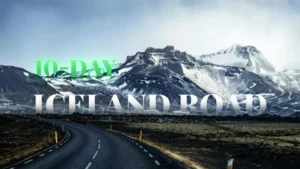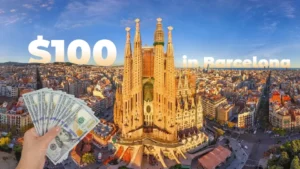Fire. It’s primal, transformative, and universally captivating. Across continents and cultures, communities harness its mesmerizing power in spectacular festivals, weaving ancient traditions, spiritual beliefs, and communal joy into unforgettable celebrations of light, heat, and renewal. These “Festivals of Fire” offer some of the planet’s most visually stunning and culturally profound travel experiences. Here’s a glimpse into this dazzling global phenomenon:
1. Las Fallas de Valencia, Spain:
For five days every March, Valencia erupts. The air fills with the scent of gunpowder from daily mascletàs (deafening firecracker displays) and the smoke of hundreds of towering, satirical sculptures (ninots) – intricate works of art months in the making – deliberately set ablaze in a cathartic, roaring climax (La Cremà). It’s a chaotic, beautiful testament to art, satire, and purification.
2. Jeongwol Daeboreum Deulbul Festival, South Korea:
Celebrating the first full moon of the lunar new year (usually February), this festival transforms mountainsides across Korea, especially Jeju Island, into rivers of fire. Volunteers carry torches up slopes, setting dry grass ablaze in controlled fires. The practice wards off evil spirits and pests, fertilizes the land, and creates an ethereal, swirling landscape of fire against the night sky – a breathtaking ritual of agricultural renewal.
3. Up Helly Aa, Scotland (Shetland Islands):
Braving the deep winter cold of late January, the town of Lerwick becomes a Viking stronghold. The centerpiece is a massive torchlit procession of hundreds of “guizers” (participants in Viking gear), culminating in the fiery sacrifice of a meticulously crafted replica Viking longship (galley). The blazing vessel against the dark Shetland night is a powerful homage to Norse heritage and a defiant celebration of community spirit in the darkest season.
4. Yi Peng & Loy Krathong, Thailand (Chiang Mai):
While technically two festivals often coinciding in November, they create a unified spectacle of light. Loy Krathong sees thousands of small, decorated floats (krathongs), often holding candles, released onto rivers to honor the water goddess and let go of negativity. Yi Peng fills the skies above Chiang Mai with countless giant, fire-powered paper lanterns (khom loi), symbolizing the release of misfortune and carrying wishes heavenward. The sight of thousands of fiery points ascending into the night is pure magic.
5. Burning Man (Black Rock Desert, Nevada, USA):
Though a modern creation, Burning Man has become a global cultural phenomenon centered around radical self-expression and community. Its fiery apex is the burning of a massive wooden effigy (“The Man”) and often the elaborate “Temple” structure.
6. Chahârshanbe Sûrî, Iran:
Held on the eve of the last Wednesday before the Persian New Year (Nowruz), this ancient Zoroastrian-rooted festival (“Red Wednesday” or “Scarlet Wednesday”) involves jumping over bonfires in streets and alleys. As they leap, participants chant poetic verses asking the fire to take their pallor (sickness, misfortune) and give its redness (health, vitality) in return. It’s a vibrant, communal purification ritual welcoming spring.
Conclusion
From the explosive artistry of Valencia’s Fallas to the serene lantern ascents of Chiang Mai, from the Viking echoes in Shetland to the purifying jumps over Persian bonfires, Festivals of Fire illuminate the rich tapestry of human culture. They are visceral, awe-inspiring celebrations that connect us to the elements, to history, and to each other. Witnessing these dazzling displays of flame and light isn’t just travel; it’s an encounter with the profound and the spectacular, a reminder of the enduring power of shared ritual and the primal allure of fire itself.





